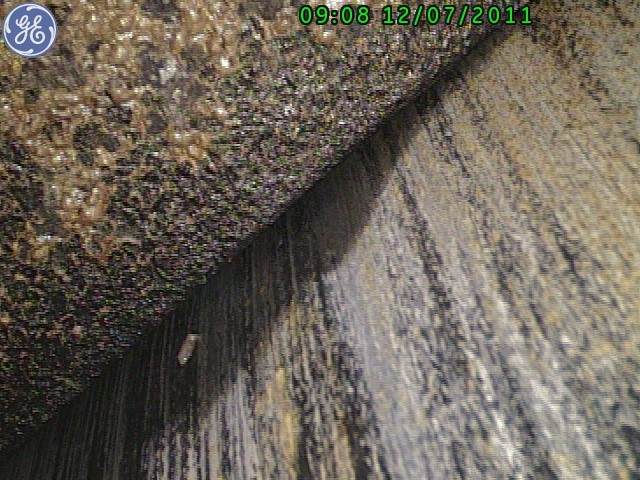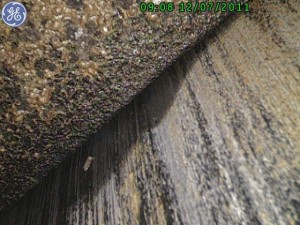The Living Dead Vacuum Pump
October 22nd, 2015 | Posted by Dane CME
With Halloween approaching, I thought it appropriate to discuss the living dead pump. It really isn’t quite dead as it continues to use horsepower and saps the strength of your vacuum system.
It is possible that in your mill somewhere in the past an engineer noticed that the vacuum at the couch was 14 inches of mercury rather than the 20 inches listed on the pump. A very logical conclusion with a quick glance at the pump curve is that the couch is passing a lot more air than the vacuum pump can take, hence it runs at a lower vacuum. So the engineer floated an appropriation asking to add a vacuum pump, installed the pump and started it up, got more vacuum and lowered the drying cost, and everybody was happy despite that the new pump which was supposed to pull 20 inches of vacuum only pulled 19 inches.
So you are now the energy manager for the mill and you are looking at the vacuum system and you notice that one machine with two vacuum pumps is (based upon the felt manufacturer’s specs) only producing 10 CFM per horsepower despite the second vacuum pump being good for 20 CFM/hp and world class performance being 28 CFM per HP by the Somarakis SV5986. What’s up with that?
As we have previously discussed the liquid ring vacuum pump is a constant volume device. It will pull in a constant volume of gas at the inlet pressure, compress it to a pressure above the pressure in the discharge, and discharge it at the discharge pressure. This is true if the pump is in good repair, which is to say that the gap between the rotor and the cone (or the rotor and the head on a flat side pump) is small enough to minimize leakage from one chamber of the rotor to another.
Compression amounts to about two-thirds of the power used in the pump. The other one-third of the power is used to move the water which is creating the liquid ring. In a new pump the gas being compressed will fill one chamber of the rotor (commonly known as a bucket), the chamber will be sealed, the sealing fluid will move toward the rotor hub thus compressing the gas, the chamber will be opened to the discharge, and the gas will flow out if the pressure in the chamber is above the discharge pressure.
Now if the pump is in poor repair and it leaks from one bucket to another as it compresses the air, the actual compression ratio inside of the bucket remains the same, however since the air is leaking back to the next bucket (which is at a lower pressure) it will move less air. You would get less vacuum with lower air throughout, but use the same horsepower. If you kept records so you could trend performance, you would be able to spot this problem. In real life, the vacuum level might be controlled by the paper machine felt whose permeability will change all of the time, so it would be difficult to tell the source of lower vacuum. Besides, the average vacuum performance changes so slowly that you don’t notice that it is changing.
Suppose this pump, because of internal leakage, is only capable of 14 inches of mercury vacuum.
If the good pump could achieve the 20 inches of mercury, the bad pump will take in air at 20 inches and compress it to 6 inches try to discharge to atmospheric (0 inches). This clearly will not work, as the discharge pressure is higher than the internal pressure in the pump. What happens when the discharge port opens is that air flows into the discharge port and into the vessel. It then transfers this air back to the inlet, effectively pumping backwards. It will also carry the entrained water back to the inlet. This is not a good situation. In extreme cases, the good pump will suck all of the water out of the bad pump. Since excess air is entering the system, a new equilibrium at a higher pressure and lower air flow through the vacuum system will result. It is interesting in this case that the bad pump will continue to use horsepower and the good pump will be at higher horsepower than if it were running alone. Thus the “living dead pump” is a parasite and an expensive one at that.
This condition can also happen with two good pumps if one is designed for a lower compression ratio than the other. As time goes by in a paper mill, for instance, many people are making many design changes and sometimes mistakes are made, so a pump designed for a service needing a light vacuum will get attached to a header needing heavy vacuum under the assumption that it will increase the vacuum. In fact the opposite happens, but once the mistake is made it is very difficult to find. In one paper mill we visited we turned off two vacuum pumps and gained 2”Hg of vacuum, and saved 600 HP!
The best way to spot this problem is to check the compression ratio of all of the pumps hooked to a common system, and then have a qualified technician borescope the pumps to see if the internal clearances are good. The photo shows a bad pump. Or you can simply call us. We have many years of experience with “living dead” pumps and other maladies that affect vacuum pumps.
This is a picture we took with our GE boroscope (it was not at a GE facility) showing extreme wear between the rotor blade (upper left) and the cone (lower right). This vacuum pump was a serious zombie!


